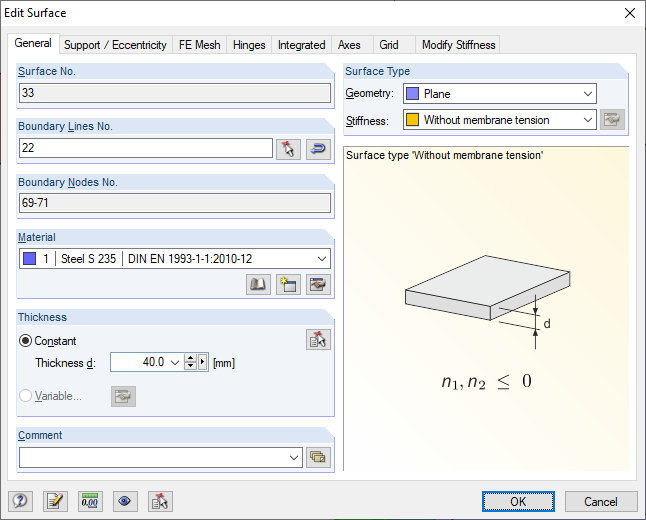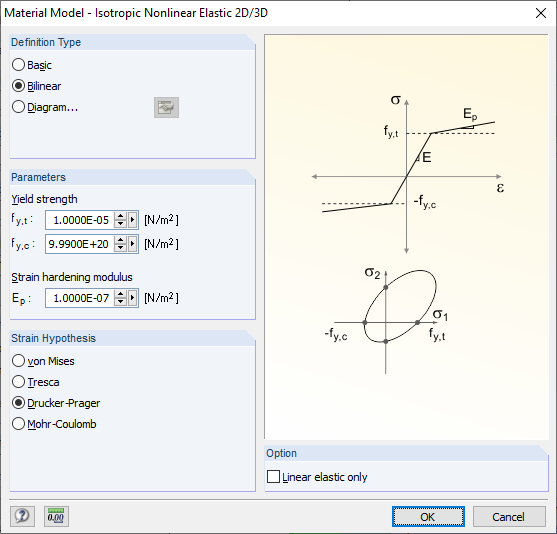The "Without membrane tension" stiffness type describes the plate and pane stiffness of surfaces.
The pane stiffness, including the shear stiffness perpendicular to the surface plane, is defined linearly elastic, and the pane stiffness in the surface plane is defined nonlinearly elastic with the material model according to "Drucker-Prager", depending on the defined thickness and the assigned material.
In order for the surface behavior to be "Without tension" in the pane direction, the nonlinear material model reacts with a yielding tensile stress fy,t approaching zero in combination with a relatively small strain hardening modulus Ep for elements subjected to tension. For compressive forces, however, the elements remain virtually unaffected (linearly elastic) due to the relatively high yield compressive stress fy,c, and react with an unrestricted compression transmission.
Since the "Without membrane tension" stiffness type basically modifies the pane-related degrees of freedom of the surfaces, it is only applied to the surfaces of the relevant model types 3D, 2D – XZ (uX/uZ/φY), and 2D – XY (uX/uY/φZ).
To better describe the partial nonlinearity of this surface stiffness type, it was renamed from "Without tension" to "Without membrane tension" as of Version RFEM 5.06.1103 on 2.4.2016.
The Knowledge Base article "Modeling Approaches for Shear/Hole Bearing Connections by Means of FEA" shows possible application.


